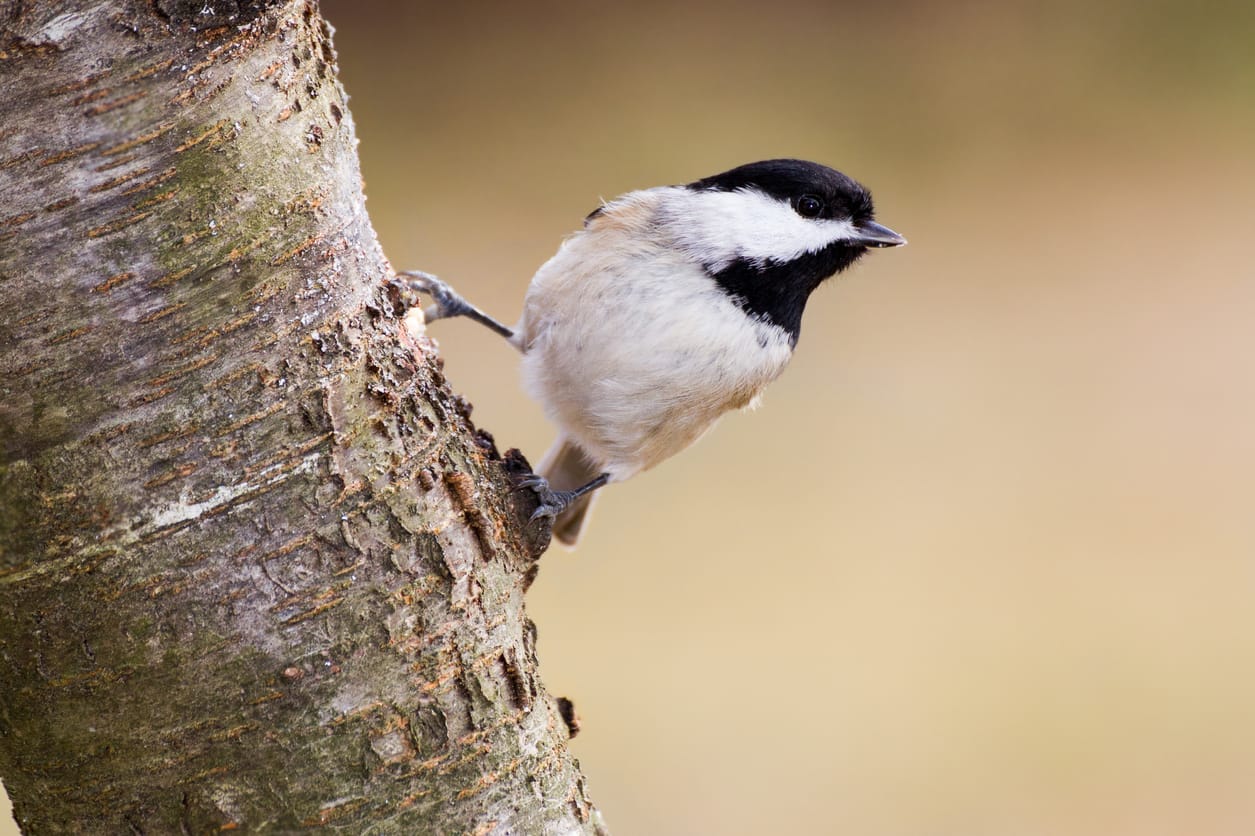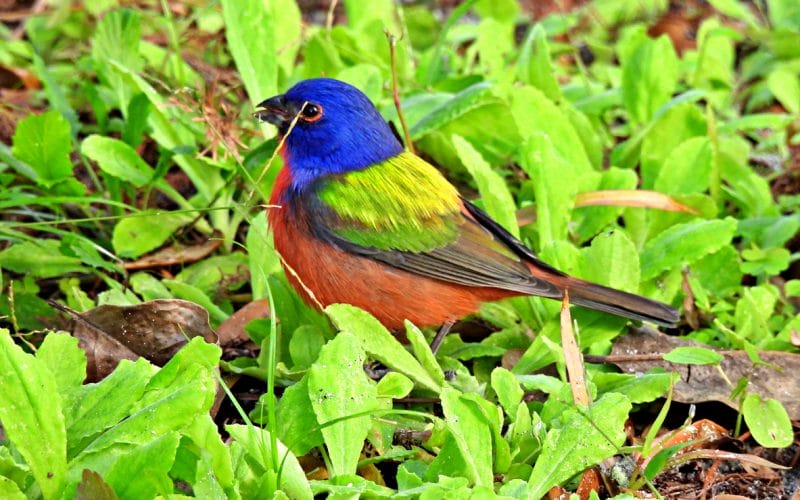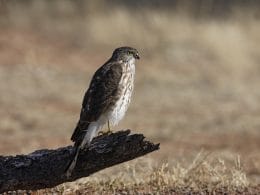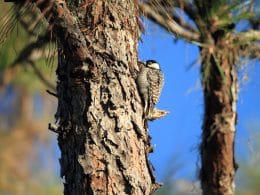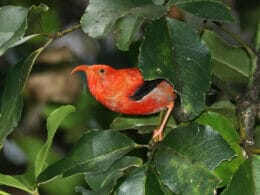Watching birds eating from your backyard feeder is a rewarding experience, right?
You leave the seeds out, keep the feeder’s door open, and wait for the lucky bird that’ll land the food. Then, you enjoy watching the birds picking the food using their tiny bills. It’s a nice way to spend the morning, and South Carolina gives the opportunity for just that with its diversity of backyard birds.
Out of the 480 species that call the state home, there are hundreds of backyard birds that you may find in your feeder. Here are the most common ones.
15 Backyard Birds of South Carolina
In South Carolina, the diversity of parks and forests make the state heaven for small birds. You’ll see Carolina wrens, red-bellied woodpeckers, eastern bluebirds, and all kinds of backyard birds if you leave them food. Here are the 15 most common ones in the state that may find their way to your feeder.
1. Northern Cardinal

The Northern Cardinal is probably the most common backyard bird in North America, and its numbers are abundant in most of the US. It’s also pretty easy to identify, so it’s overall one of the best backyard birds you can wait for because they’ll surely make an appearance.
These birds are all red with a lone black patch on their faces. It surrounds their bills, stopping at their eyes and extending down to their collars. You may see a bird with grey hues, but most of them are all red.
Author Note: Northern Cardinals will eat anything you leave in the feeder, be it seeds, suet, corn, or dried fruits. When they aren’t feeding on your seeds, they spend their time near the forest’s edges, foraging for insects and flying around.
2. Tufted Titmouse

The Tufted Titmouse has an appearance that’s every bit as unique as its name. It’s best known for the crest on top of its head that looks like a crown. In addition to that, it has grey wings with a peachy hue underneath. Other than that, its front is all white with a patch of black above the bill.
The birds may look blue under the sunlight or close to water streams, but they’ll look gray from far away, especially the females.
Tufted Titmice are small, and they spend most of their time in deciduous forests. Sometimes, they go out of their comfort zone to visit parks and lawns. You can attract a pair by laying out some suet or crushed peanuts.
3. Carolina Chickadee

The Carolina Chickadee looks strikingly similar to the Black-capped Chickadee, so you may face some hardship identifying it. It’s an overall small bird with gray wings and a black head cap. It’s less rounded than the Black-capped Chickadee, so you can know the difference when you look up close.
Chickadees spend most of their time inside forests and parks. When they want to hunt for food, they pay a visit to backyard feeders. If you want to attract them, you can offer some black oil sunflower seeds or crushed peanuts. They’ll also eat suet if it’s available, and maybe tiny insects.
4. Red-bellied Woodpecker

Among all woodpecker species, the Red-bellied one is known to visit backyard feeders frequently. You’ll find it standing on tree trunks and poking its bill through the wood. Other times, it’ll be feeding on whatever seeds you’re offering in the feeder.
These birds don’t have red bellies, contrary to common belief. Instead, their fronts are white, and they only have a red color on the top of their heads. Their wings are checkered in black and white, and they look different from most woodpeckers you commonly see.
When Red-bellied Woodpeckers aren’t in your backyard, they’re foraging for food in woodlands and close to water streams. You’ll frequently see them clinging to oak and hickory trees.
5. Northern Mockingbird
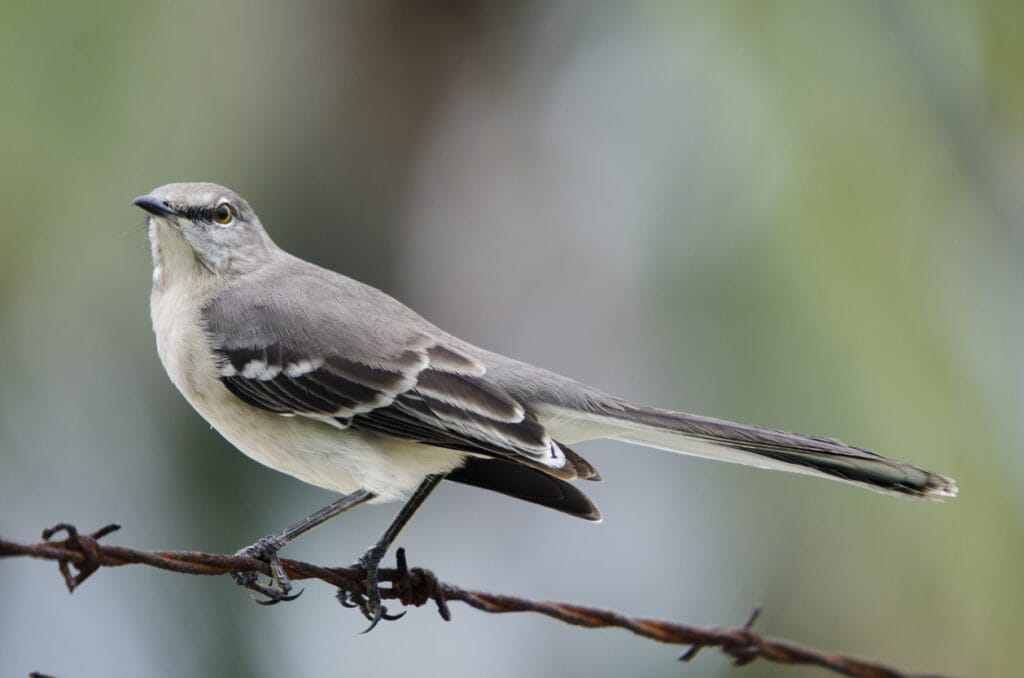
The Northern Nockingbird has a distinctive appearance with its tall tail that’s flipped upwards and its proud stance like a hawk’s. The bird also has a slender body with dusty brown wings. Some birds will seem more like gray, but all of them will have white patches on their tails.
You may have seen a mockingbird perching on a telephone line and singing before since that seems like the favorite hobby of these birds. Other times, they’ll be flying around in residential streets and parks.
To attract them to your backyard, you can lay out some berries and other small fruits. These birds also love baths, so you’re lucky if you have one of those.
6. Eastern Bluebird

You’ll realize the Eastern Bluebird in an instant when you see it in your backyard. No other backyard bird in South Carolina has the same blue, peachy, and white coloration. The birds have chunky bodies and short tails, contrary to most birds of the same size. Their bills are slender with a slight curve at the tip.
These birds will mostly be in golf courses and woodlands, and they use breeding boxes whenever they can. They’ll visit your backyard feeder and stay if they find insects and berries. You may also leave them mealworms.
7. Carolina Wren

Carolina Wrens are only slightly bigger than hummingbirds. Their coloration is unique, consisting of brown and beige shades, so you’ll probably know it’s them at first glance.
These birds have chestnut wings with beige fronts. Their wings and tails have mild checkering, and they have a distinctive off-white line running above their eyes. On top of that, their bills are tall and slightly curved at the tip, giving them a feisty look.
Author Note: Most of the time, wrens are foraging inside shrubs and brambles. They’re common backyard birds (also in Texas), so you may find a couple on your lawn if you have a feeder.
If you can provide insects, Carolina Wrens will love you, and they’ll likely repeat the visit. Alternatively, you may put some small berries and seeds and see if they’ll eat.
8. Yellow-rumped Warbler
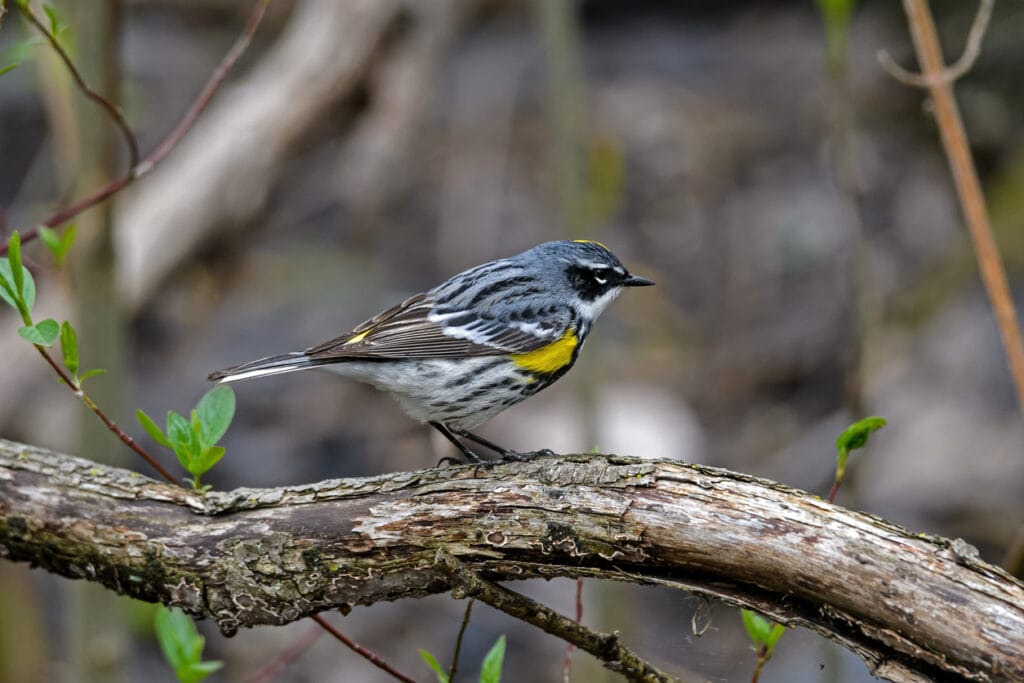
Contrary to the Red-bellied Woodpecker, the Yellow-rumped Warbler actually lives true to its name. It dons a yellow rump and sides, and there’s a tiny yellow patch on top of its head that you probably won’t see from a distance.
Other than that, the bird has a grey coloration with some black around the eye.
A Yellow-rumped Warbler lies on the middle of the scale between a Caroline Chickadee and a House Finch, so it’s a fairly small bird. You’ll find it common in South Carolina starting from September.
These small birds eat insects, but they may feed on fruits if you leave some in the feeder.
9. Downy Woodpecker

The downy Woodpecker is one of the smallest breeds in its family, and it’s common all across the 50 states. It’s just slightly bigger than a house finch, and it has a relatively short tail.
A Downy Woodpecker will have a mostly black body with a white front. The bird also has a red patch on top of its head, but it’ll hardly be visible from far away.
Most of the time, Downy Woodpeckers will be in deciduous trees and weed stocks. They also love staying close to water streams.
You can leave some seeds and fruits in your feeder if you want to attract Downy Woodpeckers. They’ll also feed on any insects they find.
10. American Crow
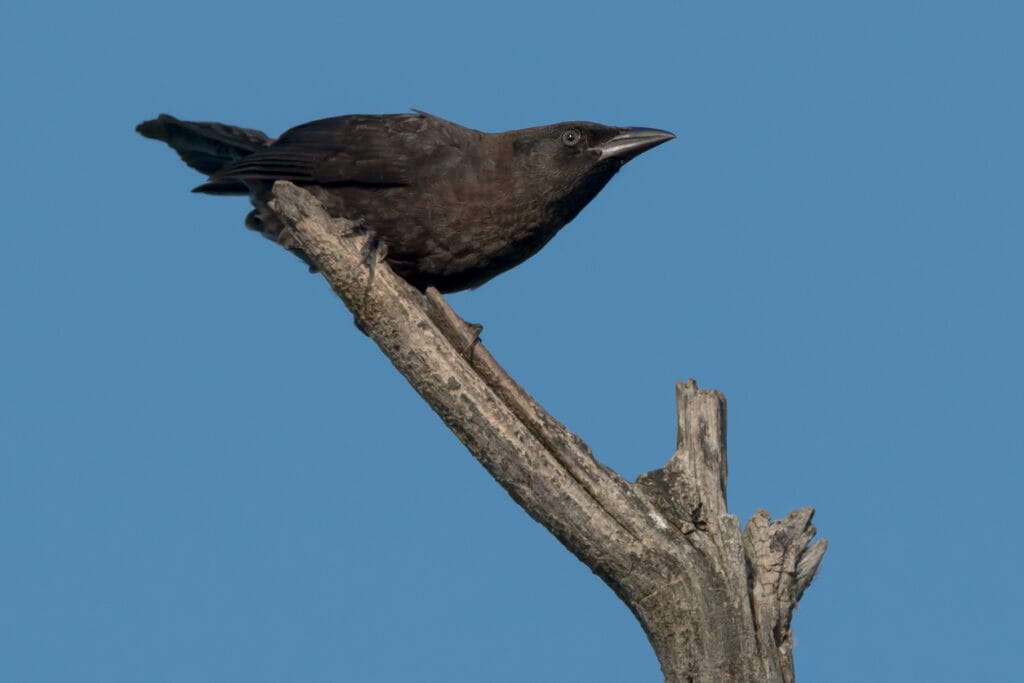
Most people only look for small backyard birds, not giving much thought to crows and bigger birds. However, in South Carolina, you may see a couple of crows in your backyard. The American Crow is pretty common in the state, and it’s a frequent visitor to backyard feeders.
I doubt you need any tips identifying an American Crow. It’s a blackbird with a crow’s bill, so it doesn’t take a genius to recognize it. Some people can’t identify crows from ravens, though. In this case, the American crow is smaller than the average raven.
American Crows mostly stay on the city streets and fields, but they may visit your backyard if they find a trace of something they can eat. They feed on small mammals and insects, so keep your lawn empty of those if you don’t want a crow to visit.
11. House Finch
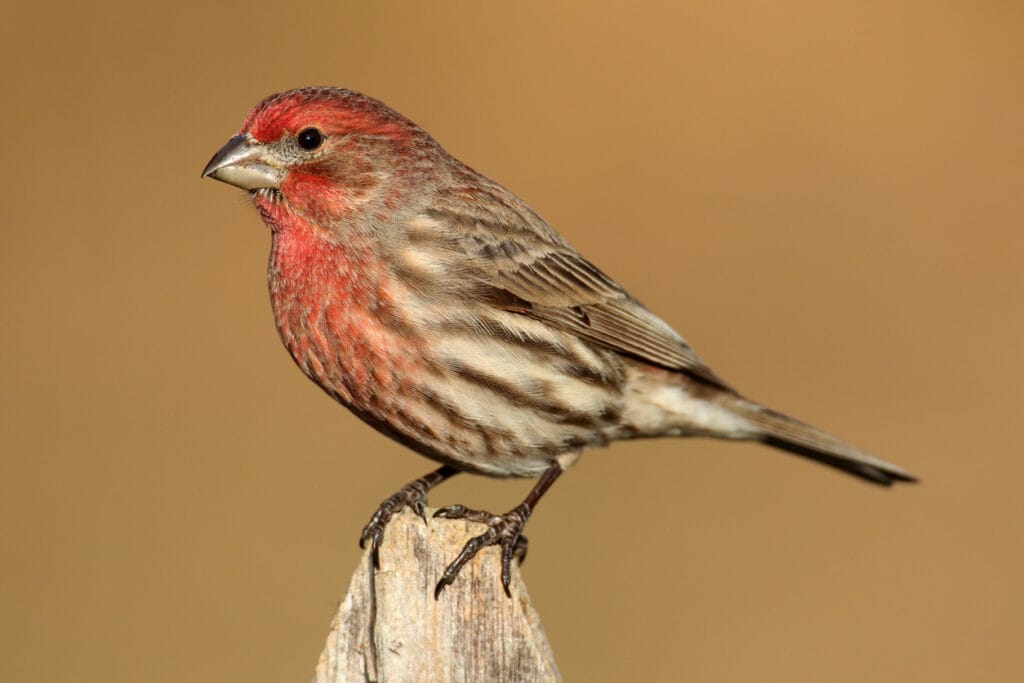
Among all finches, House Finches are the most likely to stay in city streets and appear in backyards. They have beige wings with white streaks, and the males have red fronts. The red color fades down their bodies, blending into the beige and disappearing. Females, and sometimes males in different seasons, are only beige without a hint of red.
These small birds spend a lot of their time on telephone wires and inside bushes. When they want food, they’ll look for feeders. They primarily feed on sunflower seeds, but they’ll also eat thistle seeds if they’re available.
12. Swainson’s Thrush
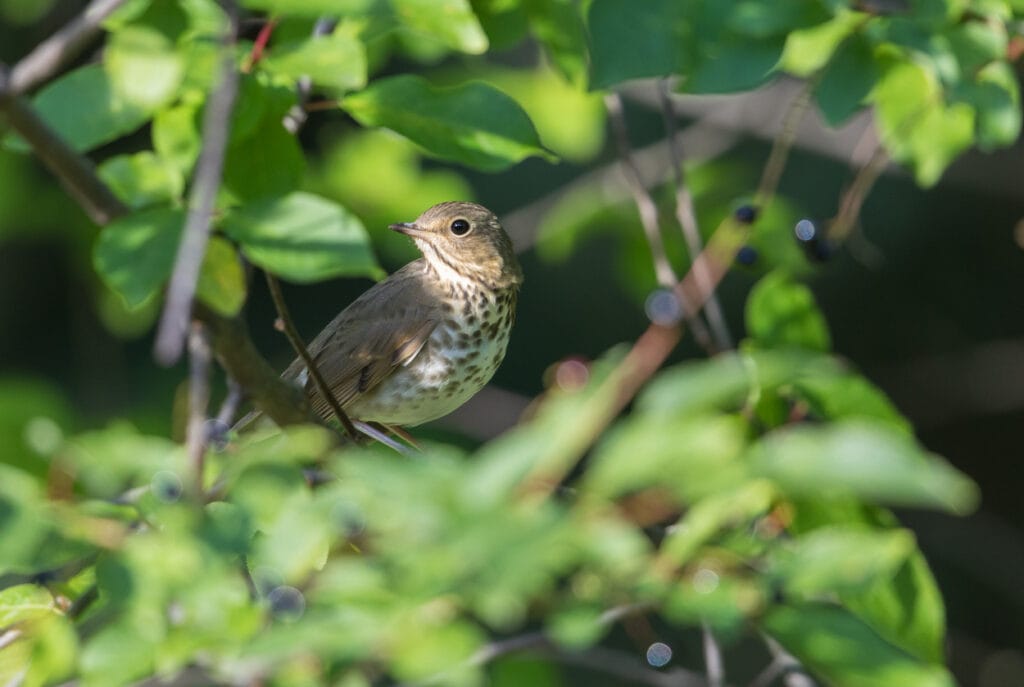
Swainson’s Thrushes aren’t that common in the US, appearing in abundance only during their migration seasons. However, they appear in South Carolina during the summer. You’ll recognize them in an instant, thanks to their spiraling call that erupts through the air.
Their appearance won’t help you much with the identification because they look pretty much like most backyard birds. They have brown and gray bodies with white chests. You may know it’s them because of their wide eyes, though.
Author Note: Thrushes visit backyards to look for fruits, especially strawberries. Other than that, they stay in deciduous forests feeding on all kinds of insects they can find.
13. Blue Jay

The Blue Jay is one of the most common birds in most states. It’s easy to recognize, thanks to its bright blue color that appears vividly under direct sunlight. The blue is at its brightest near the edges of the wings, and it has some black and white spots all over. You may also identify the bird using its crest that looks like the one on tufted titmice.
These birds are notorious for bullying smaller ones, so you may want to keep an eye out for them when they’re in your backyard. The last thing you need is a full-blown fight in your feeder between a Blue Jay and some small songbird.
You may attract Blue Jays to your feeder by leaving some peanuts or seeds, but keep in mind that they’re aggressive feeders.
14. Rose-breasted Grosbeak

The Rose-breasted Grosbeak has similar coloration to the Red-bellied Woodpecker, but it’s sorted differently. It has a black head and wings, along with white sides. Its collar is red, extending to its chest. It may appear rose in some cases, but it’s definitely red.
Male grosbeaks are easily identified from females because the females have white streaks running along their faces. Meanwhile, males have entirely black faces.
These birds appear in parks a lot when they’re not at woodland edges. They may visit your feeder if they find food they like, which is pretty much any seeds. You can provide crushed peanuts, suet, sunflower seeds, or any seeds you have around.
15. Scarlet Tanager
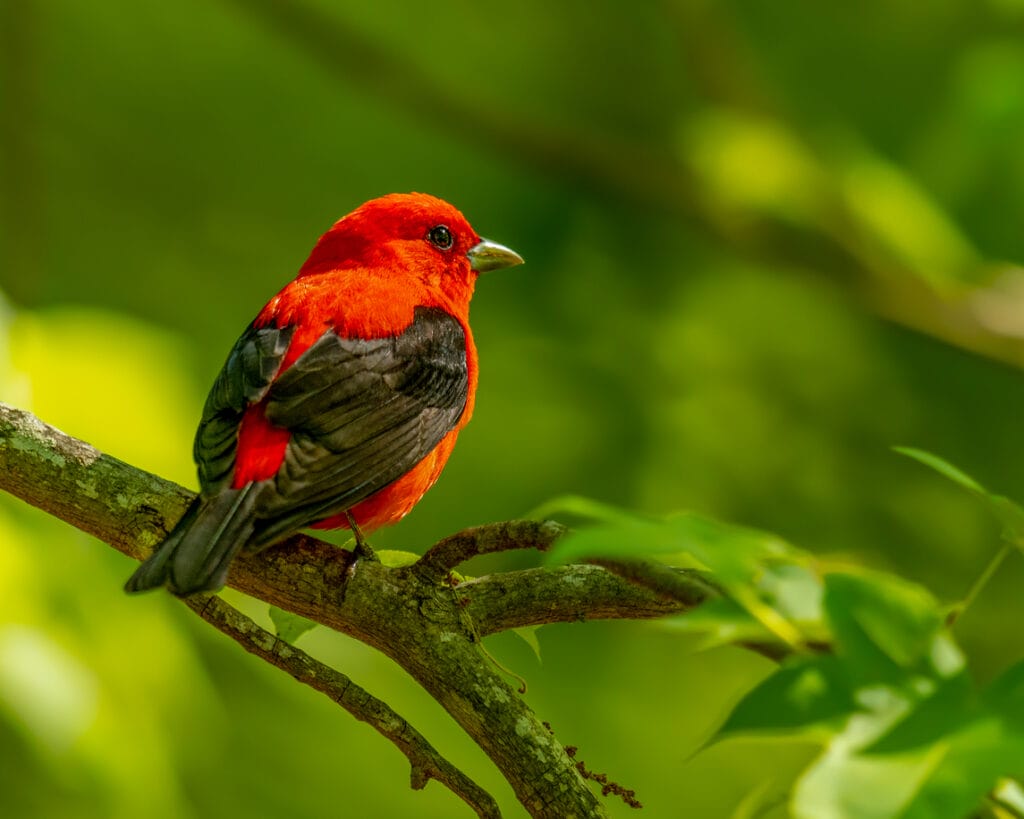
If there’s any bird that’s redder than a Northern Cardinal, it’s definitely the Scarlet Tanager. If not for its black wing, you would’ve thought it’s a ball of fire flying around.
Author Note: The Scarlet Tanager is a small bird, only slightly larger than a cardinal.
Some birds will be round and chunky, and others will be slender and tall. You’ll find them in deciduous forests and areas with dense foliage. They also visit backyards looking for berries or red fruits in general.
Scarlet Tanagers are a sight to behold because they have a unique coloration. If you want them in your feeder, you might want to offer some fresh berries or strawberries.
Wrapping Up
There are a lot of backyard birds in South Carolina you can see in your feeder—most commonly Northern Cardinals and Blue Jays. But you may be lucky enough to see a Scarlet Tanager once or even a Northern Mockingbird.
Remember to leave seeds and fruits in the feeder and install a mesh cage if bully birds are scaring away small ones. Generally, tray feeders are the best for most bird species, but small birds like chickadees prefer tube feeders.
FAQ
One of the most common birds in South Carolina is the American Crow.
The rarest bird in South Carolina is the Red-cockaded Woodpecker.
South Carolina is home to a variety of bird species, including waterfowl, shorebirds, songbirds, and raptors. Some of the more common bird species in the state include the Tufted Titmouse, the Carolina Wren, and the Pileated Woodpecker.
The official bird of South Carolina is the Carolina Wren.




